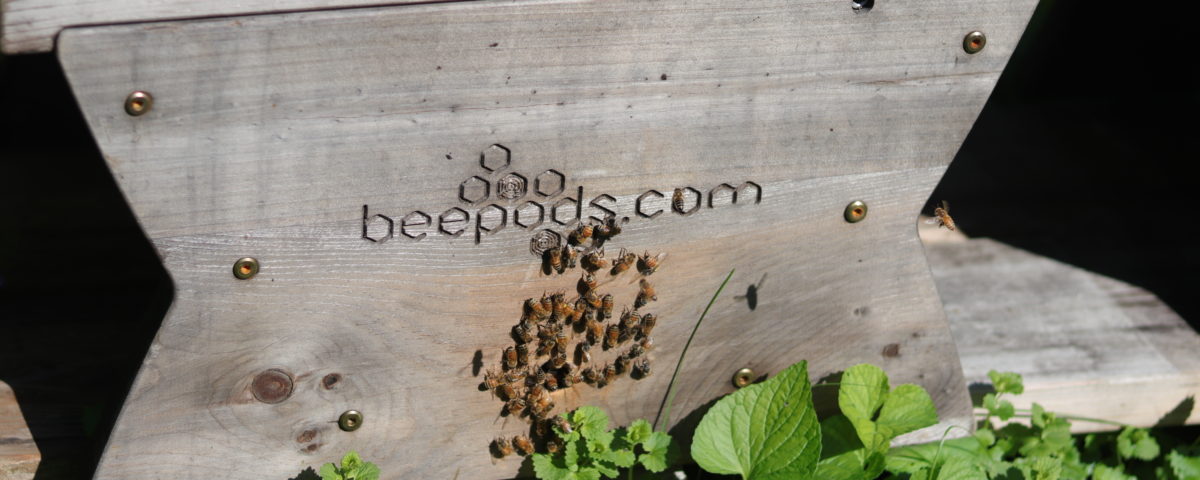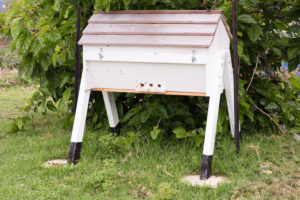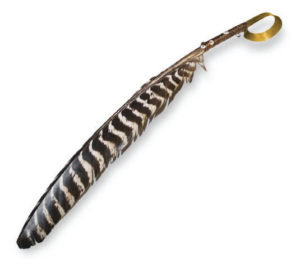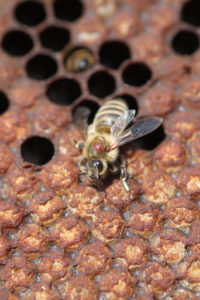- All-In-One Beekeeping for the Bees
- +1-608-728-8233
- info@beepods.com
Natural Solutions To Keep Your Colony Thriving

If you haven’t noticed by now, Beepods promotes natural beekeeping. Our slogan is Beekeeping for the Bees, after all. Honey bees have existed on Earth for over 14 million years, which is a lot longer than modern humans. During that time bees have survived despite centuries of bad weather, infestations, and diseases, and are still around today. However, it’s no shock that in recent years bee populations are declining due mostly to the impact of chemicals, habitat destruction, colony invaders, and climate change. Humans play a big role in these challenges to honey bees, this is why we believe so strongly in a more natural approach to beekeeping.
If you’re a beekeeper, or thinking of becoming one, there are many natural ways you can keep your bees healthy and thriving. At the end of the day, we believe the most natural way to keep your colony heavily is to implement preventative maintenance. We can’t always control what happens to our bees or what gets inside the hive, but we can do our best to try and prevent issues before they even start.
Method to the Madness
So, natural beekeeping…what exactly does that mean? The truth is, there isn’t a solid definition. The general consensus is beekeeping techniques that require as little hands-on work as possible and as little manipulation as possible. Essentially, not using chemicals for treatments, not using smokers and other various tools, and not using antibiotics. There are several other definitions, like not using supplemental feeding, the debate on whether or not essential oils are considered natural, and whether or not you should get your bees from a breeder who hasn’t reared brood with antibiotics.
Whatever the case may be, at Beepods we always do our best to verify the science behind any beekeeping technique and treatment (natural or synthetic) to ensure we are providing the bees the best chance of success each and every year. Using treatments, natural or otherwise is typically only used if the prevention methods used didn’t work. There is still much to learn about the science of beekeeping, but our main goal will always be the health and safety of our favorite pollinators.
For more information and tips for starters, we have taken a couple deep dives down defining natural beekeeping.
Prevention Methods and Natural Solutions
Alright, so you have a little background on natural beekeeping. What are some of the best ways to prevent harm to your colony and what can you do if those methods didn’t work. We’ve listed some below.
Varroa mites:
The big one, in our opinion. If you don’t know, these parasites eat the fat stores around larvae and pupae, causing birth defects and death. They also cause a disease called varrosis. They can be detrimental to a hive and very difficult to get rid of.
Solution:
Sprinkle powdered sugar on the top of the frames. The sugar will fall through the fames and on to the bees. This will trigger your bees to clean each other and will cause the mites to lose their grip and fall through the bottom of the hive or off the bees mid-flight.
Varroa mites are one of the deadliest colony invaders known to bees. Sometimes, treating with insecticides can have the opposite effect and end up leading to the death of the queen. This has led scientists to try and breed honey bees to be naturally resistant to Varroa mites. In this article, the author discusses how scientists are trying to breed bees with better grooming habits and to have a more aggressive approach to clearing mites. The best defense is often a natural defense.
Small Hive Beetles: These nasty buggers get into the hive and contaminate honey stores with their… poop. They have a hard shell which makes it almost impossible for bee stings to get through. The best way to avoid an infestation is prevention. Check out these prevention tips.
Solutions:
-Sprinkle diatomaceous earth around the hive and let it soak in with the rain. This will act as a natural beetle repellent. The substance sinks into the ground making it difficult for beetle larvae and pupae to form or crawl to the surface. Diatomaceous earth is a natural and organic substance from the Earth, so it’s non-toxic and safe to use around your home.
-Another natural element to introduce to the solid around your hive is to introduce Heterorhabditis indica nematodes. These microscopic roundworms attack beetle larvae and pupae in the ground before they can make it to your hive.
Hive Ants: The ants go marching two by two… for your bees honey! It’s not surprising that ants want a piece of the sweet stuff and that they are a huge pest. Here is what you can do to prevent hive ants.
Solutions:
– Rub the legs of your hive with petroleum jelly to prevent the ants from crawling into the hive.
– Place the legs in buckets with a little vegetable oil to create a moat.(We offer an ant moat to our customers!)

Around the Yard: Bees can pick up toxins and pesticides as they are out searching for forage. Ways to prevent them from bringing these harmful chemicals back to the hive is to stop using chemicals on your lawn and garden, and trying to convince your neighbors to do the same thing. When bees have a natural source of food, they will be stronger and live longer.
How Beepods Is Different
We believe in Beekeeping for the Bees. Listed below are some of the ways we stay natural and treatment free:
- Promoting treatment free beekeeping to all of our peers, community members, and customers.
- The Beepod itself is made with all natural materials.
- We don’t believe in using smokers to calm bees. If you’re doing an inspection, wear the proper gear, make sure the weather is good, and stay calm. If the bees seem slightly aggressive, close up the hive and do the inspection at a different time. Respect your bees.
- We use tools like the Feather Guider instead of a bee brush. The feather is gentler and prevents bees from getting caught or squished during an inspection.
 Final Thoughts
Final Thoughts
Bees are as resilient as they are delicate. You can follow all the steps correctly, but bees will still get sick, not make it through the winter, and suffer invaders. But, that doesn’t mean you give up.
Beekeeping is a journey. Every beekeeper, newbee to experienced, deals with potential harm coming to the colonies they keep. Each of these is a learning lesson to be observed, documented and prepared for the next time it happens. Beekeeping can teach us a lot about the world around us and more about ourselves, if we let it. Just because one year nothing seems to work, doesn’t mean the next year will be a failure. In fact, if you continue to work at it, learn from it, you might just be the beekeeper who figures out how to have prolific success year after year.
Resources
Varroa Mites:
Natural Treatment For Bees, 2021: https://www.goldstarhoneybees.com/natural-treatments-for-bees-2/
Varroa Mites: A Beekeepers Scourge, Beepods 2019:
https://www.beepods.com/varroa-mites-beekeeper-scourge/
Breeders toughen up bees to resist deadly mites, Erik Stokstad, 2019
https://www.sciencemag.org/news/2019/07/breeders-toughen-bees-resist-deadly-mites
Hive Ants:
Hive ants are a symptom, Beepods, 2019
https://www.beepods.com/hive-ants-are-a-symptom/
Hive Beetles:
Hive Beetles: Identifying and dealing with them, Beepods, 2020
https://www.beepods.com/hive-beetles-identifying-and-dealing-with-them/
Treatment Free Beekeeping:
5 Things Treatment-Free Beekeepers Wish They Knew When They Started, Beepods, 2020
https://www.beepods.com/join-treatment-free-beekeepers/
Treatment Free Beekeeping Explained, Scott Offord, 2017
https://www.keepingbackyardbees.com/treatment-free-beekeeping-explained/
Diatomaceous Earth:
Diatomaceous Earth: Non-toxic Pest Control for Your Home and Garden, Jessica Dawe, 2017
Bee History:
First Native American Honey Bee, Kathy Keatley Garvey, 2009
Heterorhabditis Indica Nematode:
When and how to apply Heterorhabditis Indica for small Beetle control?, Nematode Information,2018
Monica Cull
Latest posts by Monica Cull (see all)
- What Plants To Avoid In Your Pollinator Garden - May 28, 2021
- Bee Adventurous: On Mental Health And What Bees Have Done For Me - May 24, 2021
- Celebrate Endangered Species Day For The Bees - May 21, 2021




